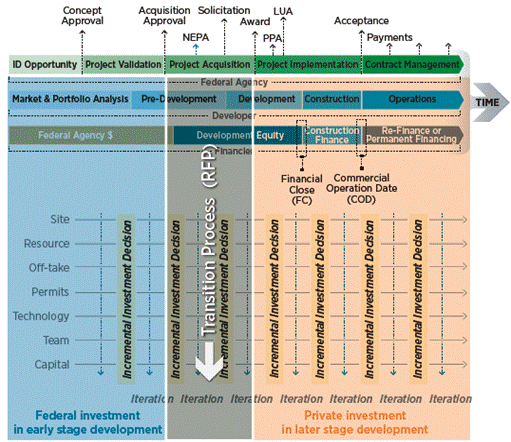As part of its policy to encourage private development of renewable energy projects on public lands, the Bureau of Land Management (BLM) issued its final rule for “segregating” (temporarily withdrawing) BLM public lands from appropriation. Under the final rule, when the BLM receives an application for right of way (ROW) for a solar or wind energy generation project (or when the BLM initiates a competitive process for solar or wind energy development), the BLM has the authority to segregate those lands for up to two years to ensure that they remain available for solar or wind projects. The final rule should provide greater certainty to developers applying for ROW to develop solar or wind projects.
Most of the public lands with pending wind energy ROW applications are currently managed for multiple resource use and are open to mineral entry under the Mining Law of 1872 (Mining Law). Such mining claims are not subject to BLM approval and could interfere with the BLM’s processing of solar or wind ROW application. Prior to this final rule, the BLM lacked authority to maintain the status quo on lands during the period between when it publicly announced the receipt of a solar or wind energy generation ROW application, or when it identified an area for such applications, and its final decision. As the BLM pointed out, certain Mining Law claims were likely filed not for actual mining, but “to provide a means for a mining claimant to compel payment from the ROW applicant in exchange for relinquishing a speculative mining claim.” The final rule is intended to prevent such claims. Because segregation is intended only to preserve the status quo until the BLM acts on a ROW application, the segregation order will have no effect on valid existing Mining Law claims or Mining Law claims made after the segregation period.
Segregation is not automatically granted with every solar or wind energy ROW application. BLM’s decision will be made on a case-by-case basis when it finds that segregation is necessary for the orderly administration of public lands. Based on the BLM’s Programmatic Environmental Impact Statements for solar energy (2012) and wind energy (2005) developments in the western states and the BLM’s solar and wind pre-application screening protocol, the BLM should possess sufficient facts to make a segregation determination shortly after receipt of the ROW application.
Segregation is effective upon publication of notice by the BLM in the Federal Register identifying the affected public land. Because it is intended to prevent Mining Law and other claims from interfering with pending BLM’s decision on the ROW application, the segregation notice occurs without prior public notice or comment period.
Upon segregation, the affected public land will no longer be subject to appropriation under the public land laws, including location and entry under the Mining Law, however, the segregated land remains subject, to the Mineral Leasing Act of 1920 and Materials Act of 1947. segregation remains in effect for a maximum of two years, but a BLM State Director has the [...]
Continue Reading
read more

 Subscribe
Subscribe

